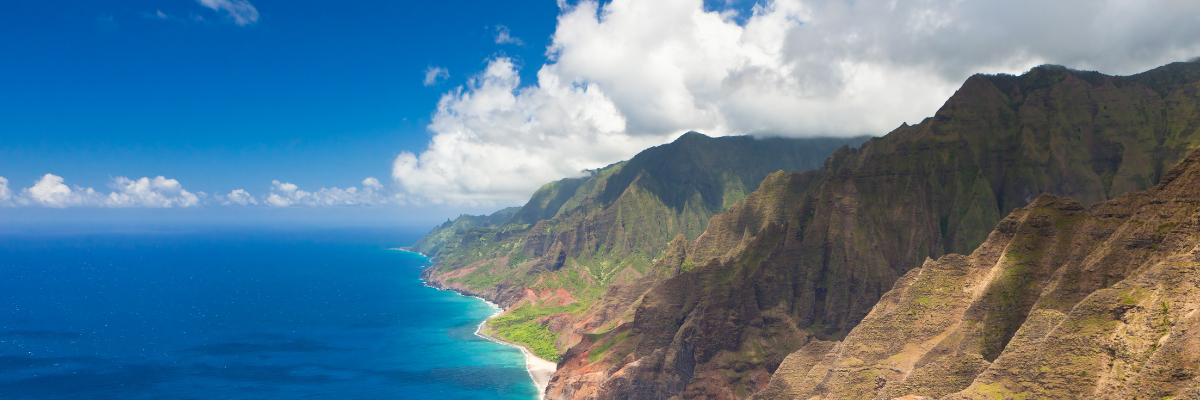This West Hawai‘i project is researching a highly conspicuous yet relatively unknown oceanic feature - surface slicks.
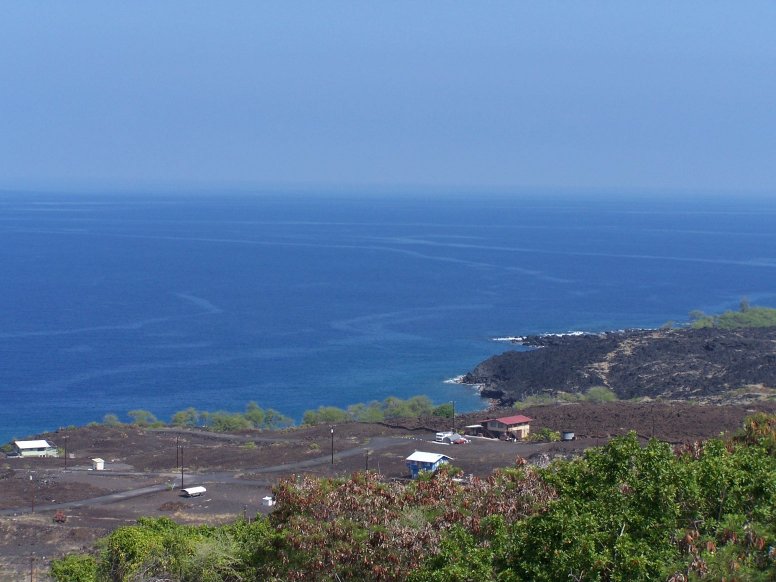
West Hawaii’s coastal ecosystems are widely recognized for the coral reefs that lie beneath the ocean’s surface. However, there is another notable ecosystem feature visible on the surface of the water — Surface Slicks. Surface slicks are long, narrow, meandering lines of smooth surface water that are commonly found up and down the entire coastline of West Hawai‘i. Some drifting organisms and objects, such as algae or plastic debris, may accumulate in slicks, while small swimming organisms, such as larval fish and invertebrates, may actively seek out slicks in search of food or shelter, making the slicks potentially important habitat in West Hawai‘i. Our goal is to understand what causes the slicks, what accumulates in slicks, and how variable ocean conditions affect the presence of slicks and the accumulation associated with the slicks.
What Creates Ocean Surface Slicks?
Hawaii’s Integrated Ecosystem Assessment (IEA) team has identified four mechanisms driving the formation of slicks in West Hawai‘i: internal wave slicks, headland fronts, groundwater discharge fronts, and Langmuir cells. What these different mechanisms have in common is that they cause the accumulation of materials—biological or otherwise—in narrow bands on the ocean’s surface. The accumulation of materials suppresses small ripples on the surface of the water, leading to the smooth appearance of slicks compared to the surrounding water. By learning about the mechanisms behind slick formation, we can better understand how ocean conditions can affect this important part of the ecosystem.
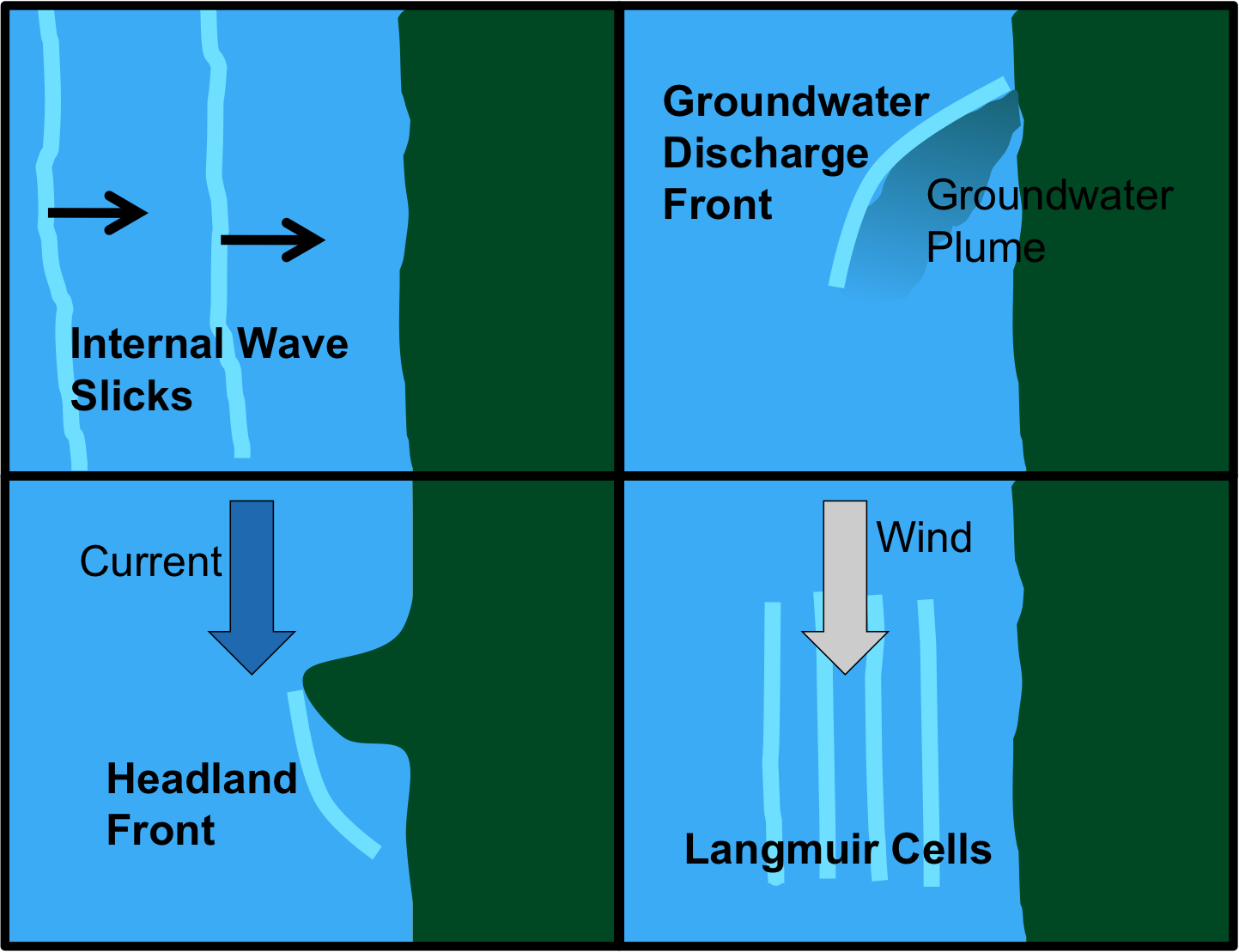
Ecological Importance
Research conducted by the Hawai‘i IEA is revealing how nearshore surface slicks serve as nursery habitat for ecologically and commercially important fishes. An assemblage of larval fish is concentrated in slicks including many commercially important predators such as billfish and Mahi mahi, coastal schooling pelagics like jacks, and many species of coral reef fish. Preliminary results indicate that more than a dozen of the primarily targeted species in Hawai‘i are found in significantly higher abundances inside surface slicks. For example, early larval stages of ‘ōpelu (Mackerel scad) and akule (Bigeye scad) are strongly concentrated in slicks and together account for more than 80% of the commercial catch from West Hawai‘i. Multiple species of goatfish are found to aggregate disproportionately inside slicks. With important fisheries for both juveniles (oama) and adults, goatfish are a popular food fish in Hawaii and are commonly targeted by noncommercial fishers. Larvae of the endemic ‘Iao (Hawaiian silverside), an important baitfish, are found almost exclusively in surface slicks.
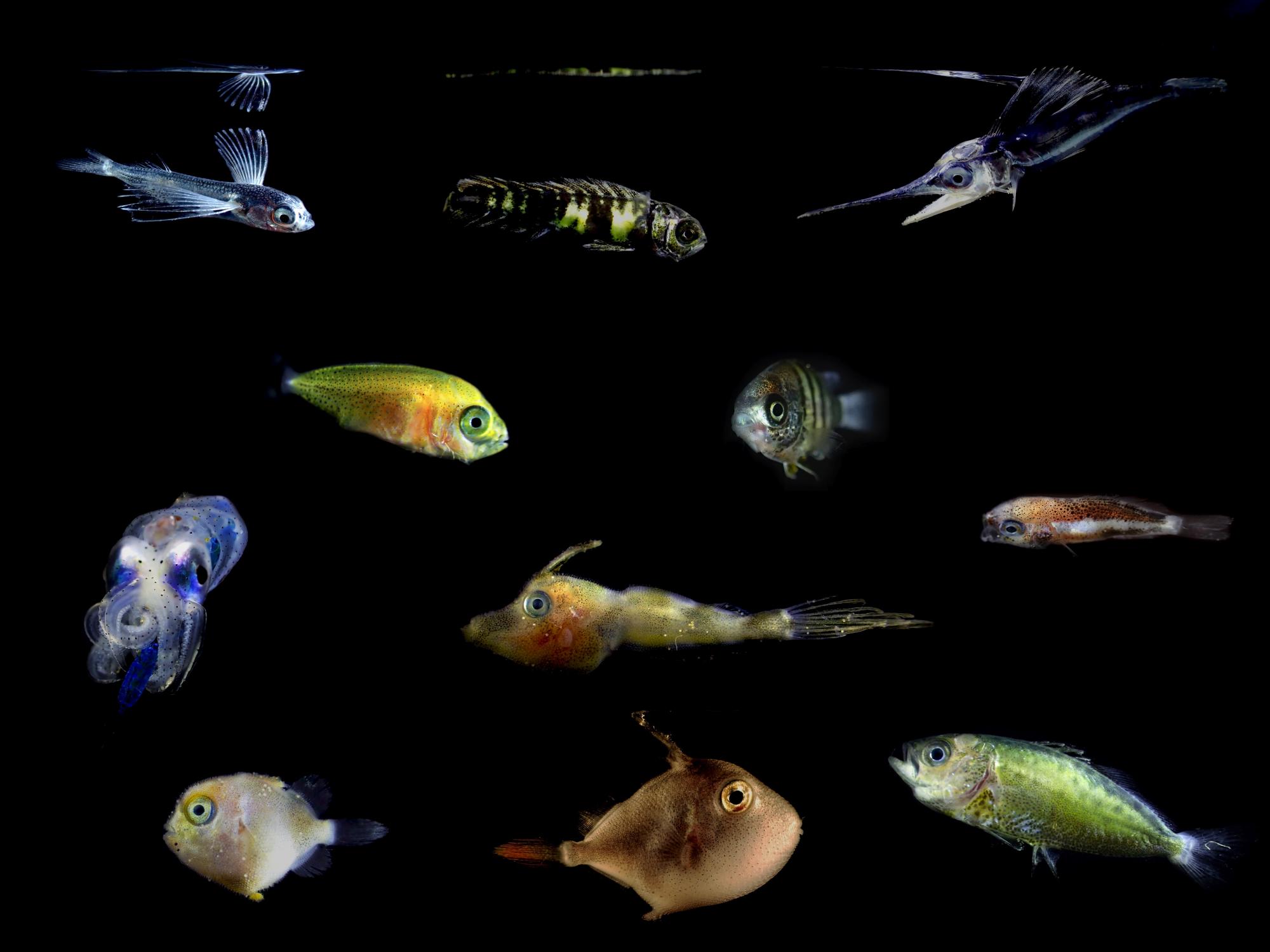
How Do Slicks Help Fish?
By concentrating larvae and their prey into dense patches that would otherwise be widely dispersed, slicks are acting as biological oases. Early results suggest that slicks enhance the accumulation of organic debris and nutrients to the surface waters, which results in a higher abundance of phytoplankton that in turn translates up the food chain. More phytoplankton provides more food for zooplankton, like copepods, which are a major prey item of larval fish. The dense concentrations of zooplankton found in slicks provide larval fish with a rich food source, which likely leads to enhanced growth and survival.
As slicks move along the coastline, they are bringing dense concentrations of plankton with them. The shoreward progression of many slicks may enhance local retention of early larval stages by preventing them from getting swept offshore and help deliver late larval stages back to nearshore habitats. Therefore, movement patterns of slicks could strongly influence larval dispersal and how local populations are replenished.
Plastics in Slicks
Surface slicks also concentrate floating debris, particularly buoyant plastics, resulting in young fish encountering high concentrations of microplastic debris in their nursery habitats. Plastic debris in some areas along the coastline was found to be at similar concentrations as those found in the North Pacific Garbage Patch.
There are multiple potential impacts of microplastics on plankton including direct ingestion (which could induce gut blockage and starvation), as well as sorption of persistent organic pollutants. These contaminants could potentially reach higher trophic levels and affect the overall marine food web and eventually human health. In collaboration with ecotoxicologists, we are beginning to investigate the potential effects of microplastic waste on the vulnerable younger stages of fish in West Hawai‘i. To learn more about larval fish and plastics read this article "Prey-size plastics are invading larval fish nurseries" by Dr. Jamison Gove et al.
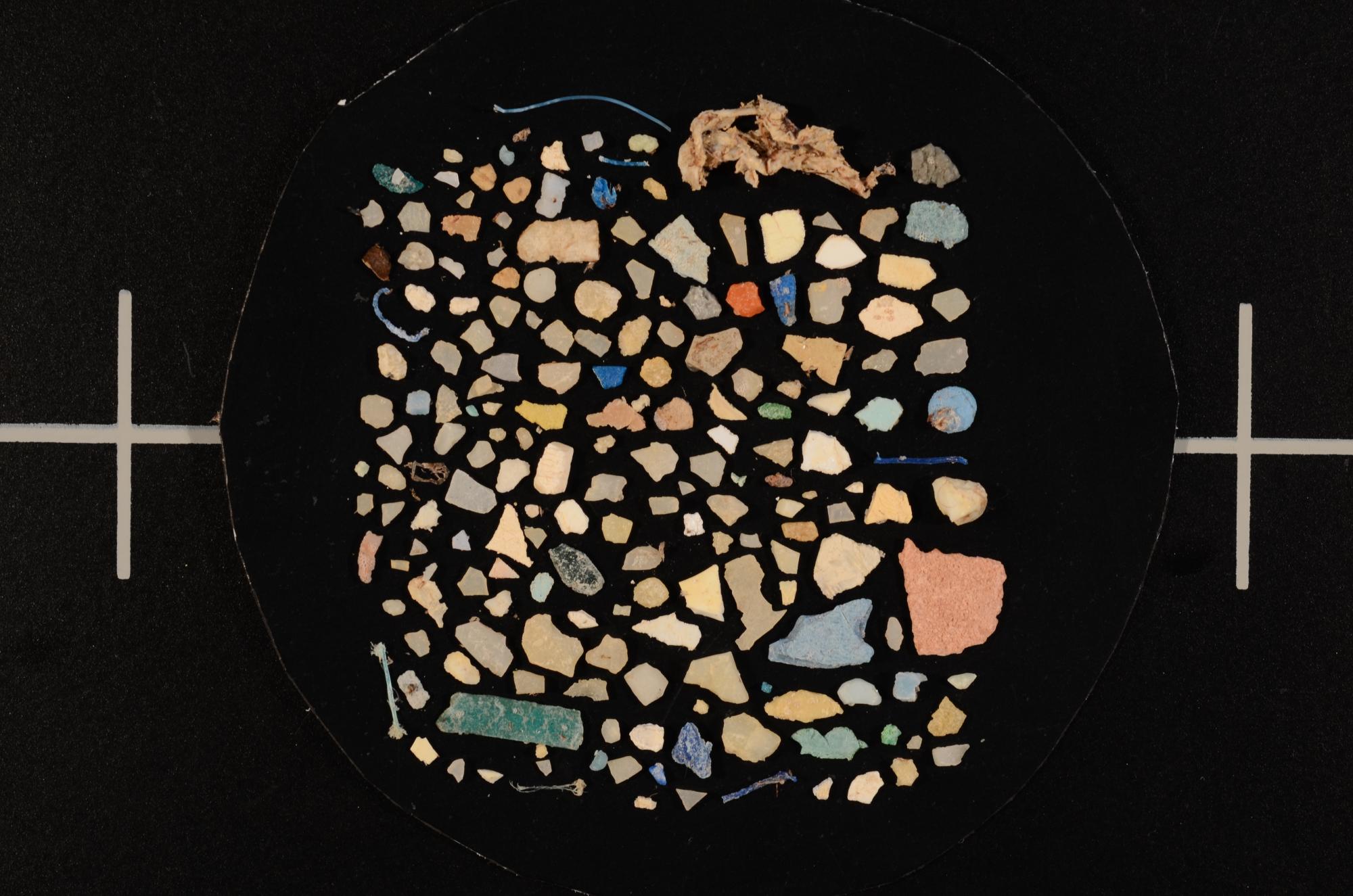
How Much Slick Habitat is There in All of West Hawai‘i?
How much larvae and microplastic are floating around in the slicks off of West Hawai‘i? In order to scale up findings from our field sampling and answer these questions, we are using two types of imagery:
- satellite images from space
- photos from land
Synthetic Aperture RADAR, or SAR, is an active satellite-based sensor that beams pulses of microwaves at the Earth’s surface and measures the signal that reflects back to the satellite, similar to the way SONAR uses pulses of sound. It can distinguish the smooth surface of a slick from the rougher surrounding waters and therefore can be used to map the footprint of slicks along the entire west coast of Hawai‘i at a single point in time. We can use this data source to calculate how frequently slicks occur in different areas, how much area of the ocean surface is occupied by slicks, and whether the prevalence of slicks is correlated with oceanographic conditions (e.g., tides, currents, winds).
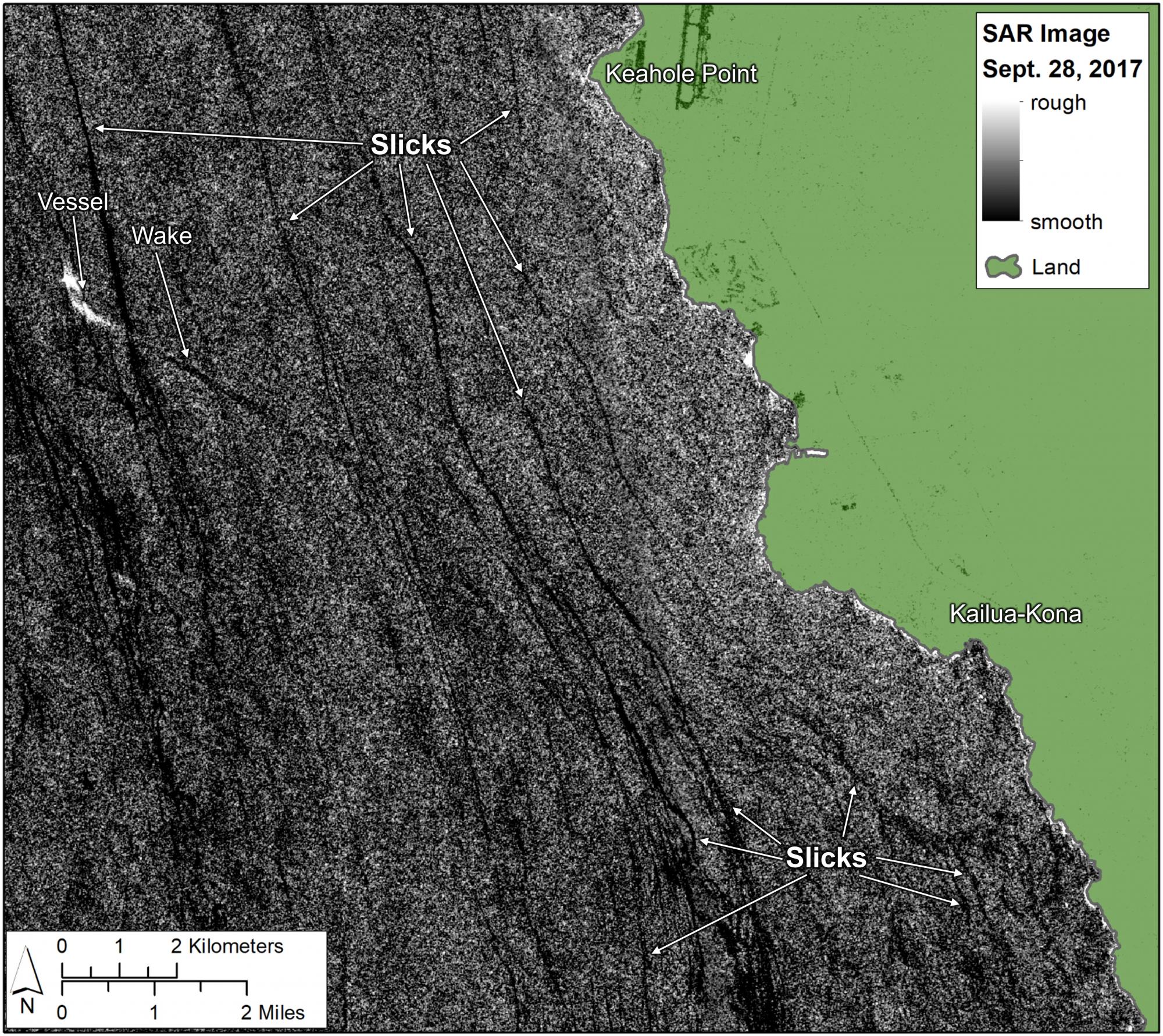
Community Members Get Involved
We are also working with community members to mount time-lapse cameras on homes and businesses with clear scenic views of the ocean. Time-lapse footage is being used to observe the movement and "behavior" of slicks over the course of days to seasons, and provide insights into the mechanisms that cause slicks to form. Imagery can also be transformed into map overlays, used to measure the speed at which slicks move, and used to validate what we see in SAR imagery. The use of these technologies will allow us to produce reliable density estimates of plankton, larvae and plastics across the entire coastline that will ultimately help us to model and predict future changes.
Overall, our research is indicating that surface slicks likely play an important role in the coastal marine ecosystem in West Hawai‘i. Understanding the ecological relevance of these surface ocean features will help us manage local fisheries and protect the region’s valuable marine resources. Similarly, assessing the underlying physical mechanisms that cause the slicks helps us understand how changing ocean conditions—from regional eddies to El Niño cycles to climate change—will affect the slicks and their role as fish nursery habitat. Ultimately, this research will elucidate how these dynamic habitats contribute to the growth, survival, and transport of young fishes and invertebrates in this rich marine ecosystem.
